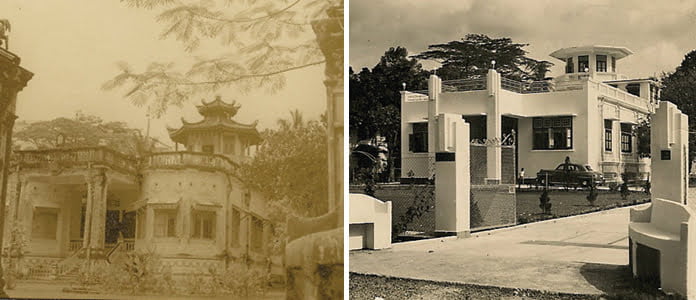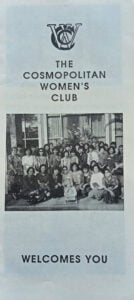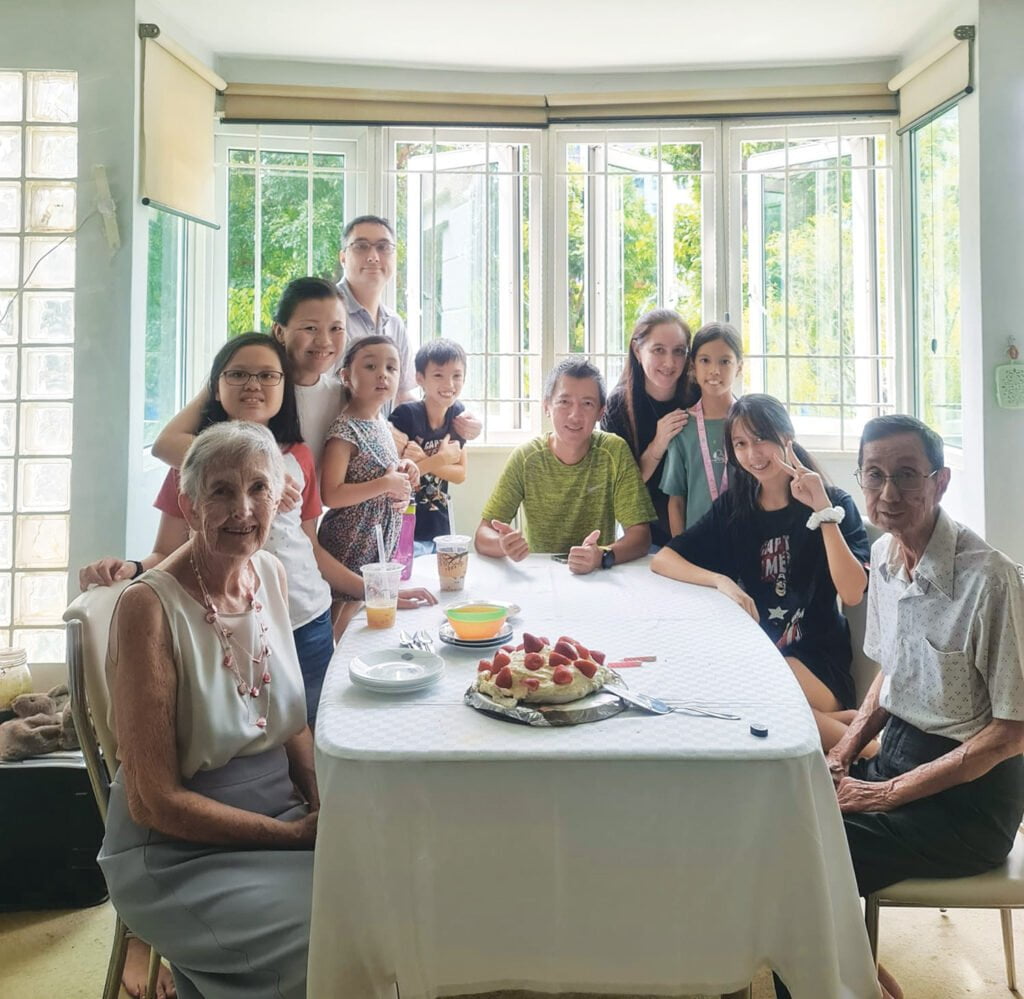
“A walk to the market entailed my traversing through foliage, keeping clear of frisky monkeys”
You met your husband before you moved to SG. Please share your love story!
Soo Ren and I met in London in April 1965. He was studying architecture and I was with the Australian High Commission. We lived with three other boarders in a boarding house in West Hampstead and were good friends before romance blossomed. We married in August 1968 at Westminster.
When did you first travel to Singapore?
I arrived on board ‘Flotto Laura’ on a National Day public holiday in August 1970. This was also when I met my parents-in-law for the first time. We lived in the family home at Cuscaden Road, off Orchard Road. The imposing, 14-bedroom home, set in large grounds, housed about 30 people, comprising Soo Ren’s parents and his siblings. My husband is one of 12 siblings, 10 boys and two girls. It was a lively household! A bevy of traditional amahs looked after the extended family.

Tell us about life back then …
In the 1970s, newly-independent Singapore was like a big country town, rustic and unhurried. Extended families tended to live together, such was the simplicity of life. Around our house it was jungle-like, where today Regent Singapore and Hotel Jen now hold fort. The wet market, where Tanglin Mall now stands, bustled daily with sights, sounds and smells that were unfamiliar to me. A walk to the market entailed my traversing through foliage, keeping clear of frisky monkeys and avoiding kampong roosters and dogs. Orchard Road had two-way traffic, large open odorous storm-drains, one department store of repute (C. K. Tang) and two hotels (Crown Prince and Singapura), both long since gone. The Hilton Hotel Singapore opened in 1970.
Did you experience culture shock?
Learning different customs, culture and etiquette filled my early days in Singapore, as well as getting to know my new family and adjusting to then-unfamiliar tastes (rice for breakfast, lunch and dinner!). Not long after arrival, I commenced work at the Australian High Commission. I relished familiar accents, humour and camaraderie – I had the best of both worlds.
How did you find the local food?
In the 1970s there were barely a handful of restaurants that served fare other than local Singapore favourites. Mandarin Hotel in Orchard Road took the country by storm in 1971 when its newly opened Chatterbox Coffeehouse served chicken rice, previously only found at hawker centres. I remember a humble bakery, Dong Log Wee, on the corner of Orchard and Killiney Roads, being popular for its local coffee and snacks. I would often sit on a chair by a marble-top table with hessian bags of flour, taking up floor space to enjoy a cake reminiscent of a Victoria sponge, for just a few cents. Two supermarkets offered ‘foreign’ fare like frozen meat, packaged biscuits and canned items. Vegemite and All-Bran were unheard of.
How easy was it to settle in and meet friends?
It was not easy in those early days to meet like-minded people with a view to making friends. Action was needed! Through my work, I came across Australian women married to Singaporeans who also found it difficult and who understood the ups and downs of cross-cultural unions. With the blessing of the then Australian High Commissioner, an enlightened and caring gentleman, I gathered names and contacts of 20 such young ladies when they were renewing their passports or registering their presence in Singapore. My colleague and I then invited those ladies to lunch at the now defunct Cockpit Hotel. We had much to talk about and quickly became friends.

Tell us about the Cosmopolitan Women’s Club (CWC) …
In 1973, CWC, founded by myself and friend Patricia, was officially registered as a society to provide emotional support and encouragement to ladies who were partners in cross-cultural marriages. Members and their families flourished, receiving monthly newsletters that my husband printed, collated and posted, with events such as couples’ nights, family outings, playgroups, cooking classes and talks on culture. The CWC had about 200 members in its heyday. It was deregistered after 33 successful years when it outlived its original aim, and such marriages became more acceptable in society.
When did you first come across ANZA?
ANZA and I first met in 1970 through my work at the Australian High Commission. We have remained loyal friends ever since! ANZA was small then, comprising mainly Australian and New Zealand members, unlike now with its international appeal. The monthly newsletter was a simple roneoed page received in the post. Giving monthly culture-related presentations at the regular newcomers’ mornings for a number of years was something I enjoyed, as well as penning regular thoughts for ANZA magazine since 2003. I cannot imagine myself without ANZA.
How have you seen Singapore change?
It has emerged from a big country town to a bustling, thriving, cosmopolitan City in Nature. The cleaning of the Singapore River, and of the country as a whole, has been transformative. Public transportation has taken leaps and bounds, making it relatively easy to move around, unlike the days of unreliable buses and pirate taxis. The skyline is modern and creative, reflecting the Republic’s aspirations. I appreciate the mod-cons, but do often miss the charm of days of yore.

What do you miss?
Wandering through Chinatown several decades ago was always surprising, with changing scenes, from moments of life and death, to haggling over best prices for market vegetables, clothing and cooked food. Aziza’s on Emerald Hill was the go-to restaurant, from 1979 for 24 years, while Prima Tower Revolving Restaurant, atop a grain silo on Keppel Road, afforded harbour views while enjoying Beijing fare, from 1977 for 43 years.
All photos: Raelene Tan








